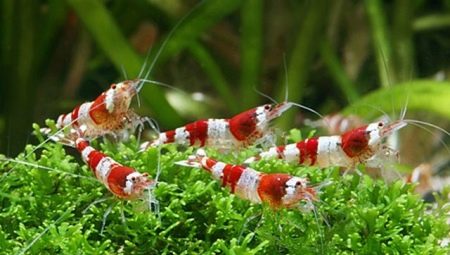Aquarium shrimps have long won the trust of experienced aquarists and become full-fledged inhabitants of home underwater communities. However, novice fish lovers do not know many of the nuances of the contents of these wonderful arthropods, and therefore the question of their breeding is more than relevant.
Description
Aquarium shrimp are omnivorous crustaceans and are highly unpretentious to the conditions of detention. In natural reservoirs, they are able to survive not only in fresh, but also in salt water. The Asian continent is considered to be the homeland of shrimp, although some of them were first discovered in Japan, Panama and Venezuela.
Unlike their marine counterparts, aquarium species have a small body consisting of several segments, 5 pairs of limbs and an impressive tail.
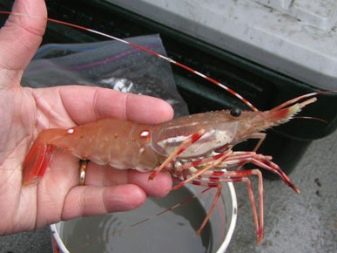
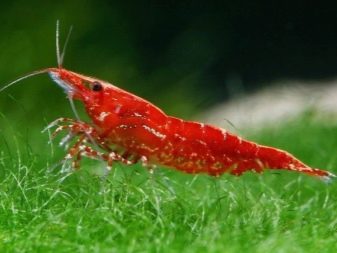
In the event of a sudden danger, it allows arthropods to rush to a safe place with rapid jumps. The front three segments have a dense shell, fused with the head. Thanks to this structure, shrimps are not afraid of attacks of aggressive fish and are able to live on the same territory with predators. The maximum size of aquarium shrimp reaches 8 cm, and females can be one and a half times larger than males.
Shrimp are distinguished by the complex structure of the oral apparatus, consisting of three jaws, which work in conjunction with three front pairs of limbs. Such "jaws" help arthropods to move and simultaneously grab food.
Thanks to the long and very sensitive antennae, the shrimp have a wonderful sense of smell and touch.
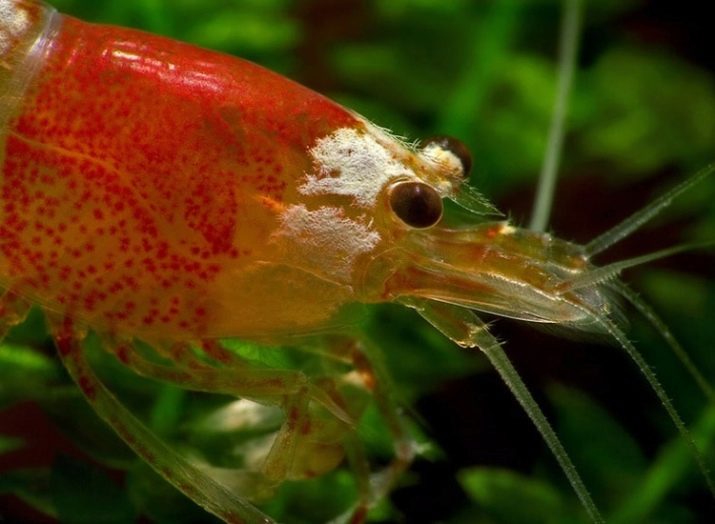
They are able to capture faint rustles and subtle smells of potential food. Gthe manhole also has an interesting structure and can rotate freely, which allows arthropods to easily find hidden prey. In addition, a wide viewing angle gives them the opportunity to notice the enemy in time and quickly use their massive and springy tail to gallop into cover.

Females have small legs on their belly - pleopods, designed to move in water and bear eggs. Males also have abdominal paws, however, their anterior pair is transformed into a reproductive organ. Both of them have a bright interesting color and look great in home aquariums. Many aquarists equip shrimp tanks with special lighting that emphasizes the beauty and originality of arthropods. Due to the wide variety of aquarium species, it is possible to acquire both very small representatives that will successfully combine with small fish, and large spectacular individuals that can not be lost among other beautiful species, harmoniously combined with them.
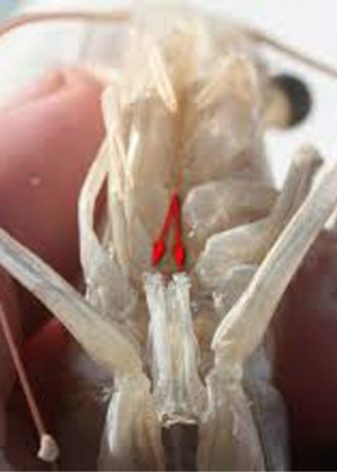
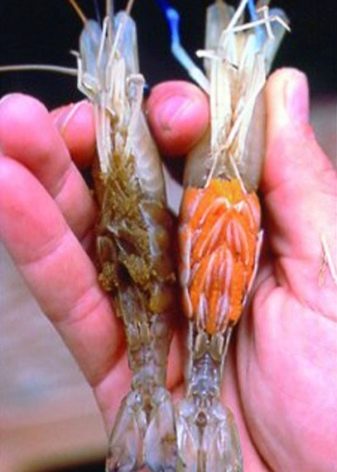
The growing demand for aquarium arthropods is due to a number of undeniable advantages of these creatures.
- Shrimps are distinguished by good endurance and often forgive their owners for errors in their content. They quickly adapt to the proposed conditions and do not require huge tanks. Some types of shrimp feel great in nano-aquariums with a capacity of up to 1 liter.
- Due to the presence of aquarium shrimp, the water in the pond does not become turbid and remains clean for a long time. This is explained by their bottom lifestyle, in which arthropods happily swarm at the bottom and eat up food and plant remains that are not eaten by fish.
- In the daytime, shrimp lead a rather active lifestyle, which is why it is very interesting to watch them. They funny jump on their tail-fan in case of danger and quickly crawl along the leaves of underwater plants. In addition, after molting, their lost limbs begin to grow back, which is also very interesting to see.
- Shrimps are peaceful and do not attack other aquarium inhabitants.
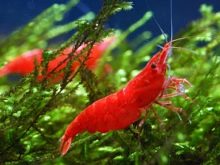
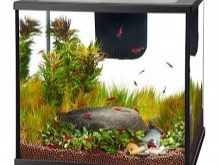

However, along with the obvious advantages, the disadvantages of keeping aquarium shrimp are still there. For example, they often become victims of larger fish, which is why when you populate an aquarium, you need to select your neighbors very carefully.
Shrimps become especially vulnerable after molting, when the old chitin shell has already been discarded and the new one has not yet matured.
In such periods, arthropods should be isolated in separate bodies of water or attached to small non-aggressive fish. The conditional disadvantages include the fact that when creating good conditions, shrimp begin to breed very quickly. In order to prevent overpopulation of the aquarium, this moment must be taken into account and in advance to find the "market" of numerous offspring.
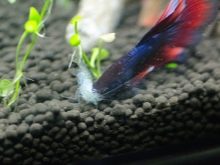
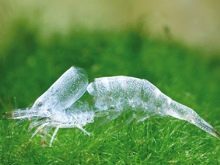
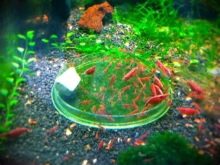
Kinds
Decorative shrimp are classified according to several characteristics, such as size, habitat and color. Among a wide variety of species, there are both very unpretentious individuals in the content, and specimens requiring the hands of an experienced breeder. Below are varieties of freshwater aquarium shrimp, even a novice aquarist can cope with its contents. All of them are absolutely non-aggressive and will not cause any trouble to their owner.
- Blue pearl It is a small arthropod with a length of not more than 2.5 cm with a beautiful blue color. By its intensity, one can judge how much shrimp lives in comfortable conditions. So, if she is in a good mood and in good “physical shape”, then her color will be bright blue, while with deteriorating conditions, it quickly fades, and the blue tint becomes barely visible.
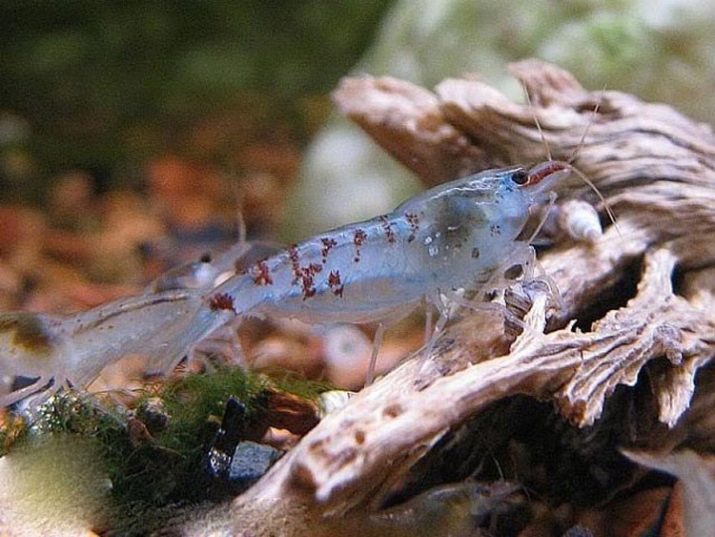
- White pearl outwardly very similar to blue and differs only in color and more transparent body. It is a transparent structure that makes it easy to distinguish a female from a male. In the female, the ovaries, which are absent in the male, are clearly visible inside the body.

- Green shrimp is a larger species, reaches a length of 3.5 cm and reproduces very slowly.
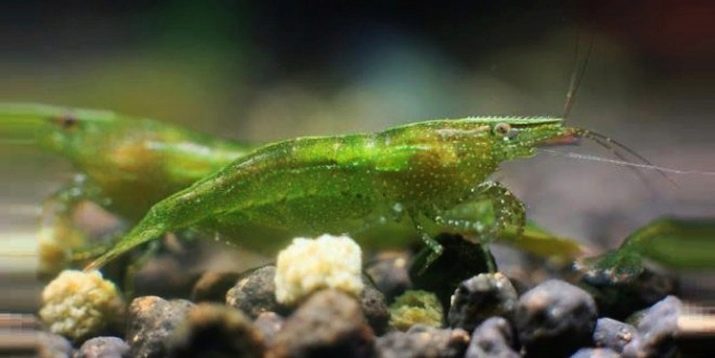
- Cherry, red and yellow shrimp differ from each other only in color and name. All of them grow up to 2.5-3 cm, multiply quickly and are great for keeping in small aquariums.

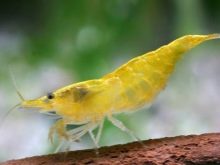
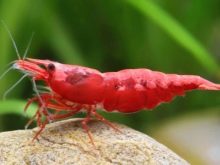
- Banana shrimp the filtrators are quite large arthropods and grow up to 10 cm. The life expectancy of individuals is 2 years, and the color is represented by yellow shades with brown stripes. Unlike other species, it is very awkward and clumsy, and eats in a special way. She sits down under the stream flowing from the filter and spreads her fan-shaped cilia located on claws. As soon as a piece of edible gets into the open fan, she immediately brings it to her mouth and eats it. Such a shrimp is slightly more expensive than the rest of the species, but watching it is much more interesting.
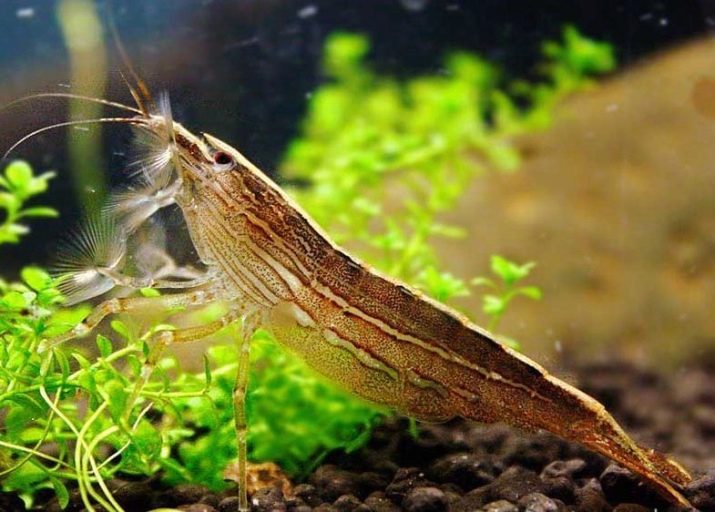
The following species can be classified as more demanding arthropods, the content of which requires the presence of special knowledge and extensive experience. The soil of the aquarium, where these species are contained, needs special treatment, and the water must be purified through a reverse osmosis system. In addition, some species of larvae need salt water, since fresh ones do not survive.
- Red crystal is a very beautiful view of shrimp. Their snow-white body is covered with wide red stripes, which makes arthropods very noticeable in the general aquarium. Such shrimps grow up to three centimeters, multiply rapidly, eat little and require strict adherence to the temperature regime. Optimal for them are +26 degrees Celsius, with warmer water the arthropod can die, and with colder water it can stop reproducing.
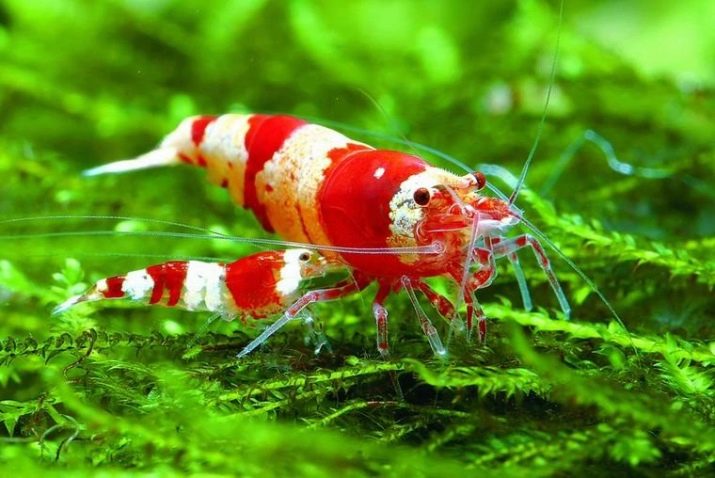
- Amano. Shrimps of this species are distinguished by a translucent gray-blue or light green body, grow up to 5 cm. The sides of arthropods are often decorated with brown spots, which gives them a very interesting appearance. Amano is recommended to be settled in small companies of 8-10 individuals: they are peace-loving and do no harm to the community. The view requires the creation of special conditions of detention and strict control over the hardness, acidity and composition of water.
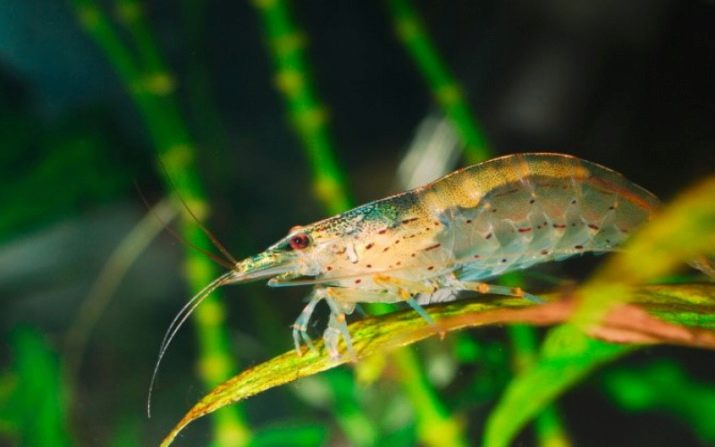
- Harlequin. Shrimps of this species have a beautiful multi-colored color, in which there are black, red and white colors. This is perhaps the smallest aquarium shrimp, as the size of an adult is 0.6-1.2 cm. Harlequin is considered a very demanding species, breeds slowly and is suitable only for experienced aquarists.

- Prawn also requires special care, it has a translucent body and a bright red nose. Adults can be kept in fresh water, while larvae require exclusively salt water. The length of the red-nosed shrimp is from 3 to 4 cm. In addition to high decorativeness, this species brings practical benefits: arthropods absorb harmful algae, which helps to maintain the cleanliness of the aquarium.
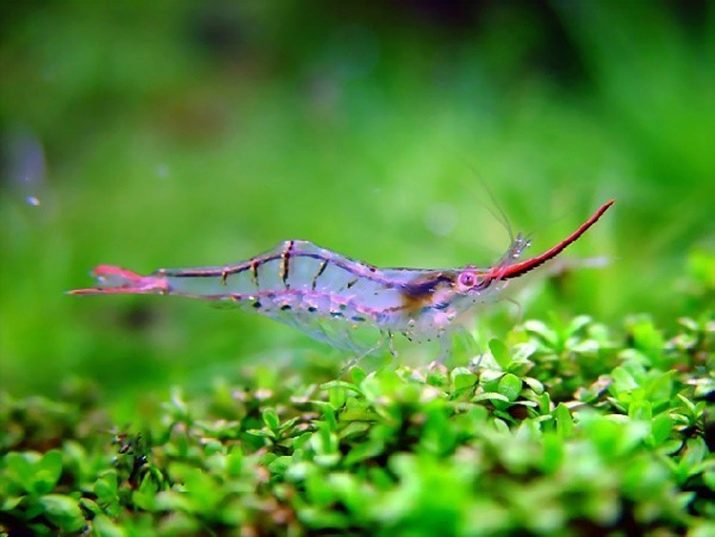
- Cardinal - a bright and beautiful view, grows to only two centimeters. The body of the shrimp is painted in all shades of red, and bright white dots are located on the sides.

- Tiger chrimp although they do not require a special composition of aquarium water, however, they need a large tank with a volume of at least 50 liters. Representatives of the species grow up to 4 cm long and have a beautiful bright color.

How to choose?
The choice of shrimp for the aquarium is a responsible matter, so you need to approach it with all seriousness. This is especially true for beginner aquarists who are not too familiar with the features of the joint keeping of fish and shrimp. If an aquarium with inhabitants is already available, then it is necessary to familiarize yourself with the compatibility of certain species using special literature for this. When you start a new aquarium, you can go to the pet store yourself and look at the neighbors of the shrimp.
For starters, it is recommended to purchase 1-2 adult individuals, keep them a couple of days in quarantine, then transplant them into a common aquarium and observe.

If the choice was made correctly, then all the inhabitants of the aquarium will be alert and active. In this case, you can safely buy the right amount of shrimp, taking into account the volume of the tank. Experienced aquarists advise you not to buy fish just brought into the zoo, but wait a while. If after several days the shrimp is alive and well, you can make a purchase. This is due to the fact that most shrimp are brought from Asia, and no one can give a full guarantee that they are healthy.
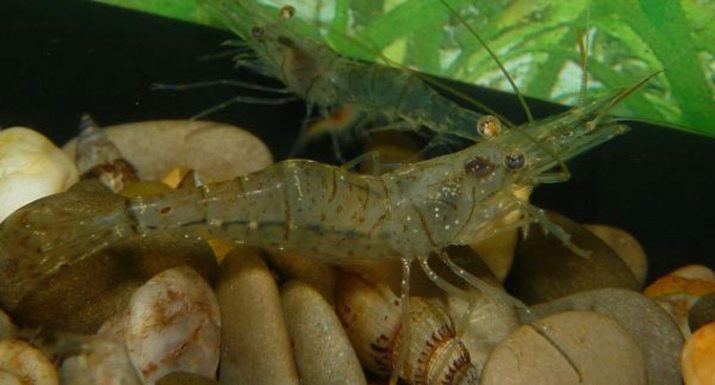
Content
It is not difficult to grow shrimp. To do this, you just need to comply with the conditions of arthropods and properly care for them.
Aquarium selection
Before you go to the pet store for shrimp, you need to do the arrangement of the aquarium. The reservoir should be chosen so that for every adult individual there should be at least 0.5 liters of water. The smallest species live well in nano-aquariums, but free space is the key to the peaceful coexistence of species. The shape of the aquarium can be any, but since shrimps prefer to live near-bottom, it is desirable that the bottom surface has a large area. The best option would be to purchase a rectangular wide tank, which is also much easier to clean than round options and aquariums, "glasses".
From above, the tank must be covered with a glass lid or net, preventing the inhabitants of the reservoir from jumping onto the carpet. If it is supposed to contain not only shrimp, but also aquarium fish, then you should install as many various shelters and mazes as possible in the tank, put decorations and lay moss. This will help arthropods to hide from pursuers, who often take them for food. Therefore, the best solution would be the arrangement of shrimp, which will contain exclusively arthropods.
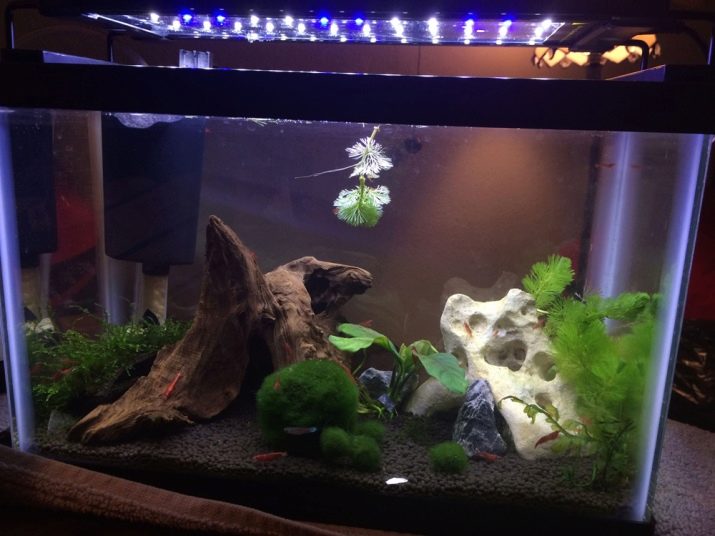
Water and soil
The next step in launching the aquarium will be the preparation of soil and water.
Coarse river sand can be used as soil.
It is pre-washed and calcined in the oven at a temperature of 220 degrees for 30 minutes. As for water, for unpretentious shrimp you can use ordinary tap water. There will be nothing wrong with the fact that she has a slightly increased stiffness, since the elements present in such water will need a shrimp to build a shell during molting. However, if the level of rigidity is too high, then there is a risk of slowing the reproduction process.
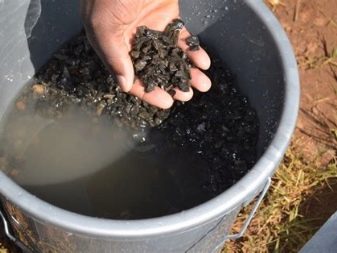
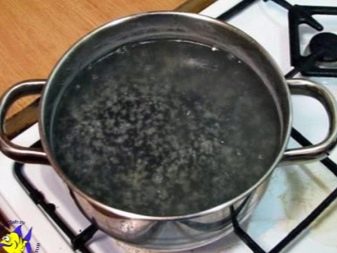
As for the temperature of the liquid, it should be within + 20 ... 28 degrees Celsius. When it increases to +32 degrees, the shrimp begin to die, and when it drops below + 15 ... 18, they lose their mobility and stop reproducing. However, a temporary decrease in temperature is not fatal for arthropods, and after normalization of conditions, they quickly restore their functions.
Too fastidious species require water with a neutral pH and zero hardness. Such indicators can be achieved by passing the liquid through a reverse osmosis system, and then add special salt to it.
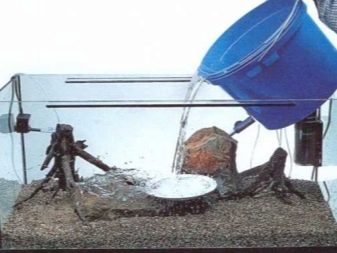
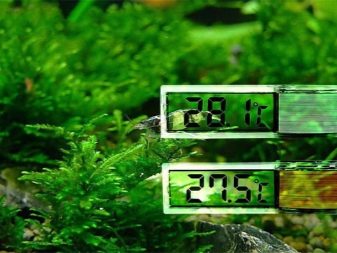
Water for such inhabitants must be defended for a long time (sometimes up to two weeks), and only after that fill in a reservoir.
Further fluid changes are carried out once a week by sampling 1/4 of the total volume, followed by topping up a fresh portion.
And you should also monitor the state of air in the room, and prevent the use of sprays and other volatile compounds in it. This is due to the occurrence of surface gas exchange, during which chemicals can enter the water. Besides, most species do not tolerate elevated nitrogen concentrations, which should also be considered when choosing aquarium water. As algae use Javanese moss, pistol and hornwort.
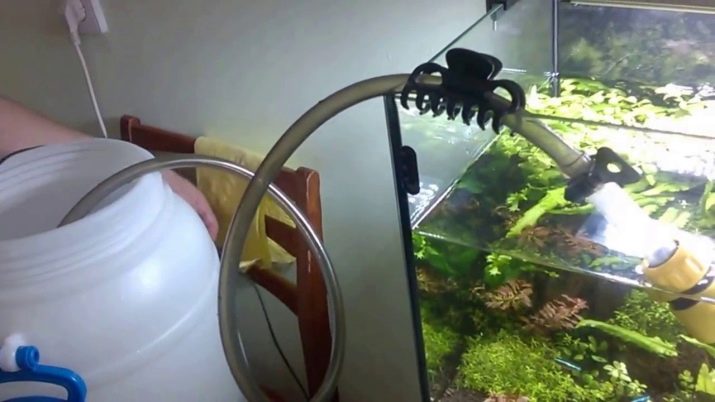
Scenery
The next stage in arranging the aquarium will be the selection of underwater scenery. When keeping shrimp in a common tank, the number of all kinds of houses, grottoes and other shelters should be maximum.
Ceramic pots, large roots and snags, as well as finished products can be used as decorations.
but when buying the latter, you should make sure that there is no paintwork on the surface of the products. New wooden decorations should be placed for several days in the water. This will contribute to the release of coloring pigments from the wood, and will prevent further clouding of the water.
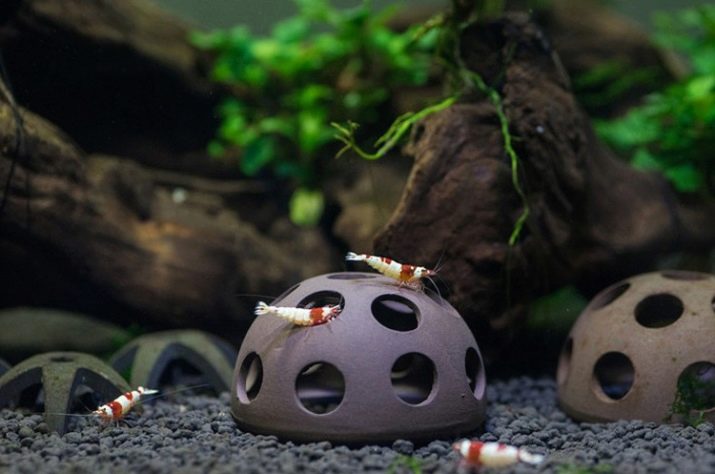
Equipment
Next, you need to start choosing the necessary equipment, such as a compressor and a filter. The first is necessary to saturate the aquarium fluid with oxygen, and the second provides the purification of the closed ecosystem from accumulated organic and mechanical debris. However, if only shrimp live in the aquarium, then the filter system can not be bought. If there are too many inhabitants, then the most suitable option is to purchase an external canister or internal sponge filter. A sponge should be put on the device’s tube to help prevent small shrimp from being drawn into the filter and save livestock.
Shrimp lead a daily lifestyle, and therefore need a long daylight hours. If the aquarium is at the back of the room and its inhabitants lack sunlight, then additional lighting must be used. As a backlight, it is recommended to use fluorescent or LED lamps, which can provide high-quality lighting, do not cause water heating and consume little electricity.
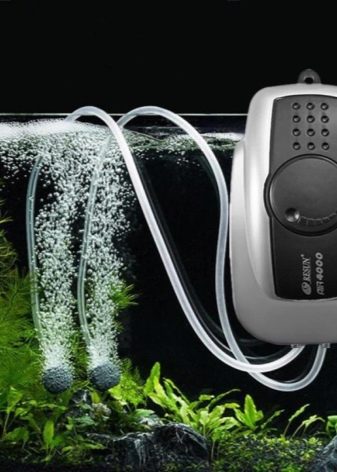

And you should also take care to ensure the optimum temperature of the water. This measure is more relevant to several heat-loving species that require a stable temperature of +26 degrees. To do this, you need to purchase a special aquarium heater equipped with a thermostat. However, completely relying on the device is quite risky, it is better to measure the water temperature from time to time with a conventional thermometer.
On especially hot days, when the temperature in the aquarium rises naturally, it is necessary, on the contrary, to use any equipment that can lower it to the desired values. For these purposes, you can use a conventional fan or a special refrigeration unit. And you should also get a bottom siphon designed for cleaning fish and shrimp waste from the ground. If the bottom is not regularly siphoned, then the decomposing organics will begin to secrete a large amount of ammonia, which will lead to a disease of the livestock.
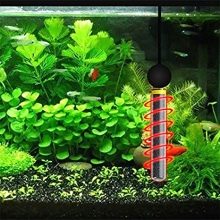
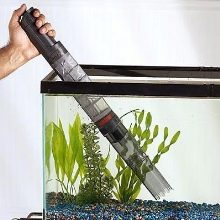
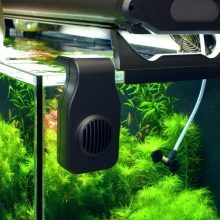
Shrimp populations
After the tank is ready, you can proceed to the most important stage - the settlement of shrimp. This must be done very carefully, so that arthropods experience as little shock as possible from getting into new living conditions. Young shrimps are advised to purchase: although they are less beautiful than adults, they are easier to tolerate transportation and adapt faster in a permanent place. You can transport shrimp in a plastic bag or in a transparent container filled with water from the previous aquarium. It is advisable to bring along several branches of underwater plants, also taken in the same tank.
Inhabitants are poured into a new tank along with the water in which they arrived and with algae.
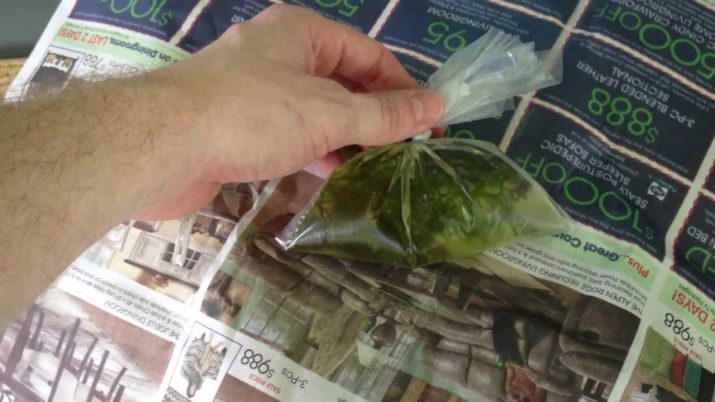
Then, pre-prepared sludge water is added gradually and the shrimp behavior is observed. If arthropods bend and rush around the aquarium, it means that the matter is poorly settled water or a violation of the temperature regime. In this case, the error is corrected, and, without rushing, continue to start the aquarium.
It should be noted that shrimp water must be defended in a dark place for at least 1-2 weeks, since only in this case the necessary microflora develops in it. And you should not install shrimp in the room where they smoke. Shrimp are very sensitive to the smell of tobacco, and in such conditions they will not last long. Shrimp can not be settled in general aquariums, in which, shortly before, drugs or water stabilizers were used. The launch of arthropods is possible only after its complete replacement, since any contact with chemical agents can lead to death.
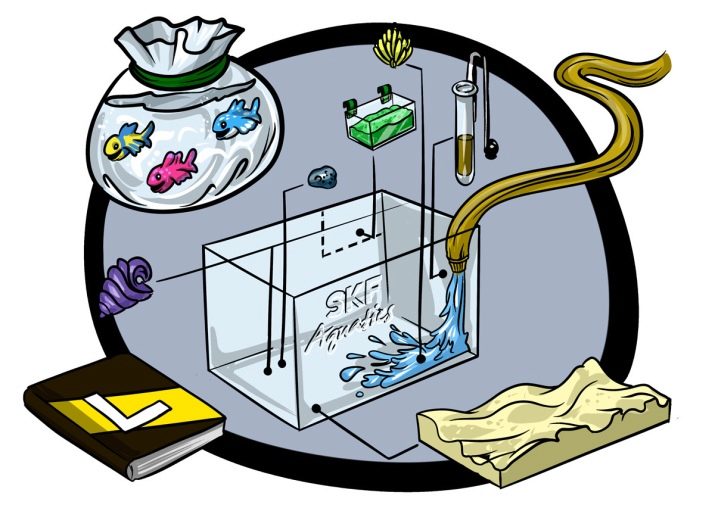
Feeding
Shrimps are absolutely picky in food and eat everything that they are offered.
These can be either fish food residues in the form of bloodworms, cyclops, or daphnia, or specialized formulations for arthropods.
They forgive the owner who has forgotten to feed them and can have a bite of particles of algae that are found in the ground or on the surface of leaves. Among special feeds, cereal formulations can be noted.
They are easily absorbed by shrimp, contain all the substances necessary for their growth and development. In addition, such feeds contain the components necessary to strengthen the shell and color intensity. In addition to ready-made compounds, crustaceans can be fed with natural products, for example, cucumbers and spinach. Shrimps are fed 2-3 times a week, since with more food they become lazy and refuse to clean the aquarium.

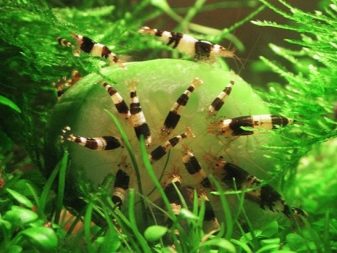
Breeding
Breeding shrimp at home is quite simple. To do this, you just need to familiarize yourself with the basic rules of reproduction, and strictly follow the recommendations of specialists.
- Before starting breeding, a large and healthy female and male are selected from the livestock. Determining the gender of the shrimp is easy. To do this, just pay attention to body size, color, habits and the presence of a "saddle". Thus, males are much smaller than females and have a faded color, and sometimes they are almost colorless. In addition, they are much more active and do not have the so-called "saddle". A saddle is called a white formation - the ovaries, which are clearly visible through the shell.
- To accelerate the maturity of females, it is recommended to change the water in the aquarium more often for fresh. This will contribute to early molting, which, in turn, precedes the release of pheromones. However, even without outside help, shrimp reproduce normally, often without requiring additional stimulation.
- A sexually mature female begins to secrete enzymes. They attract the male, and he proceeds to fertilize the eggs formed under the tail of the female.
- After fertilization takes place, you need to monitor the characteristics of the water, as when the external conditions worsen, the female sheds eggs and the breeding process is interrupted.
- The female carefully carries the fertilized eggs, often shakes it and removes empty eggs. 4 weeks after fertilization, eggs form in the eggs, which are clearly visible in the female’s stomach. Soon after the appearance of the eyes, 2 mm young fry hatch from their eggs, one to one similar to their parents.
- At one time, the female lays up to 30 larvae. As soon as they get out of the caviar, they immediately begin to eat on their own and go on to an adult lifestyle. However, small shrimp grow and develop very unevenly, which is why larger individuals gobble up the weaker ones, thereby regulating the number of livestock.
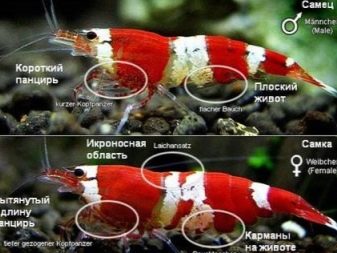
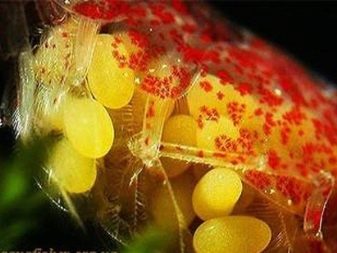
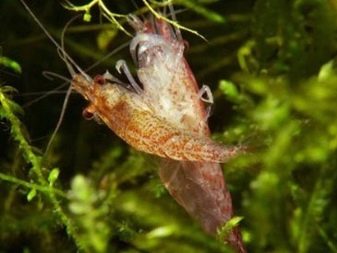

The first few days, the fry are almost invisible in the aquarium: they have a transparent body and float along the walls of the tank.
You can notice the kids by the eyes and mustache. During this period, inexperienced aquarists often confuse fry with parasites and replace supposedly contaminated water with clean water. As a result, they pour all the shrimp, and can not understand why they were left without replenishment.
Fish compatible
Shrimp are very peaceful creatures and behave roughly in shared aquariums. This is primarily due to the self-preservation instinct inherent in all crustaceans. Indeed, in order not to attract attention and not be eaten, arthropods try not to stand out from the "crowd". In this regard, in the neighbors shrimp should choose the same calm fish as they themselves. Shrimp can be housed in the same aquarium with neon, guppy, zebrafish, microsorting, gracilis, paratozinclus, microspecial, snail ampoulia and helena, Siamese algae eater, ancistrus, catfish, non-sticky and otocinclius.
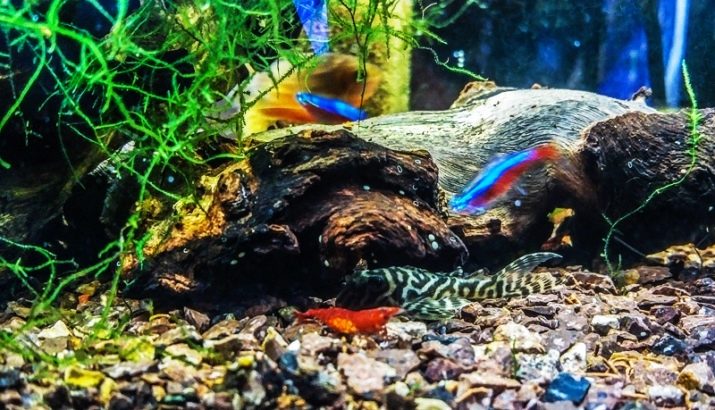
With swordsmen, rhodostomuses, and corridors, co-cultivation is allowed on the condition of a large aquarium, which avoids competition for territory and food. It is undesirable to settle shrimps with cichlids, char, goldfish, gourami, angelfish, barbs, bobs and with aggressive species of catfish. It is undesirable to place brightly colored and pale shrimp species in one tank. Neighborhood can lead to their crossing and loss of color intensity.
About Cherry aquarium shrimp - their reproduction, keeping, feeding and compatibility with fish in a general aquarium can be seen below.
